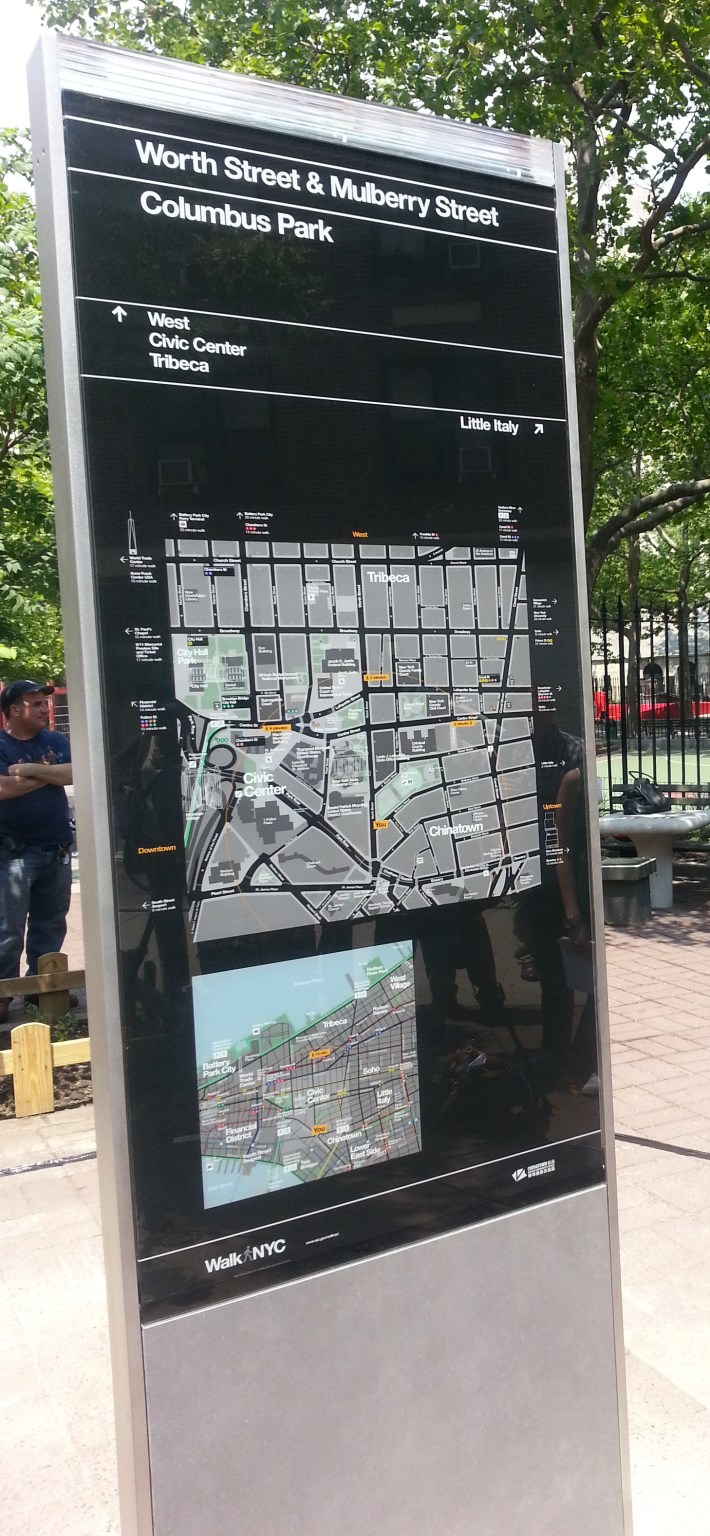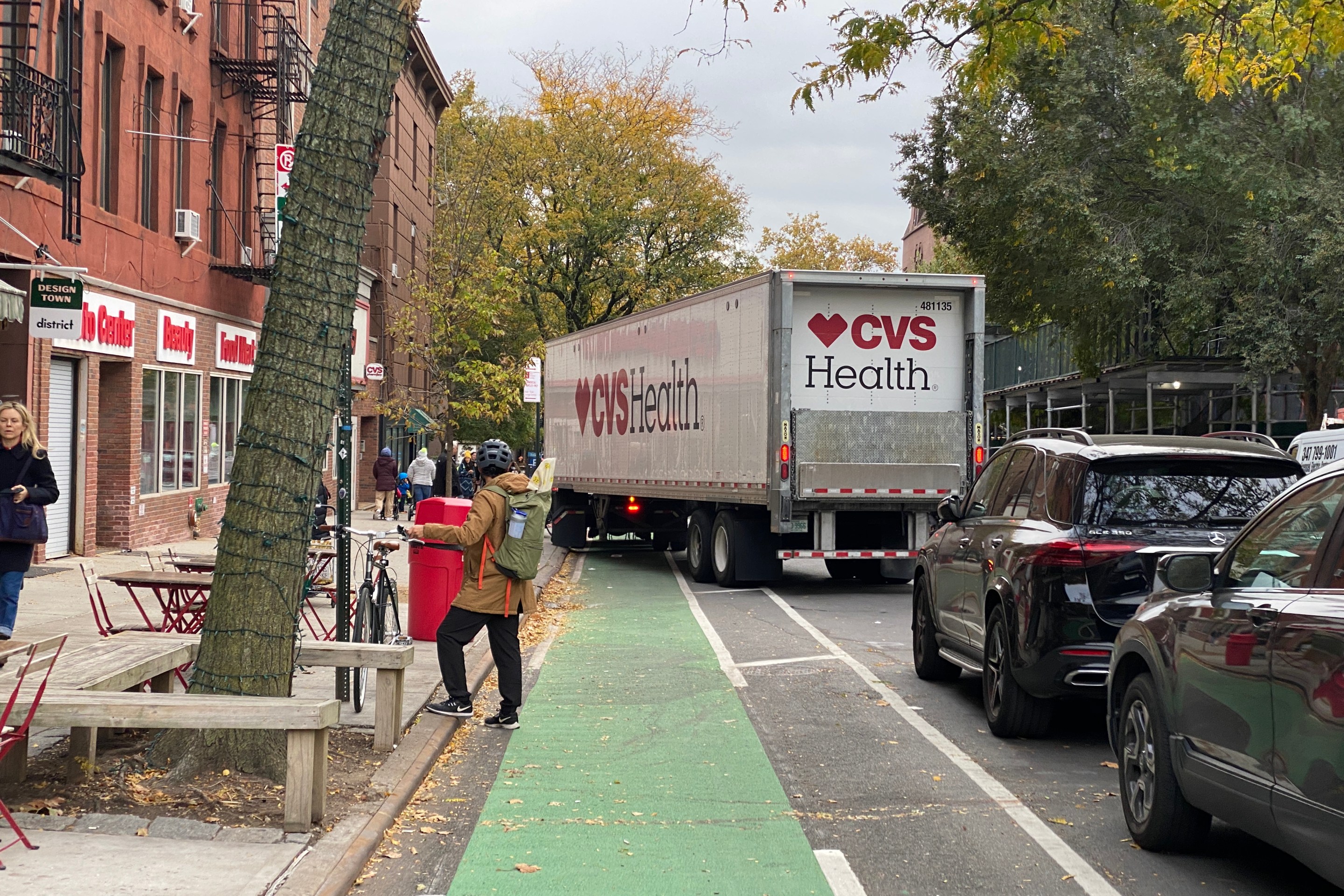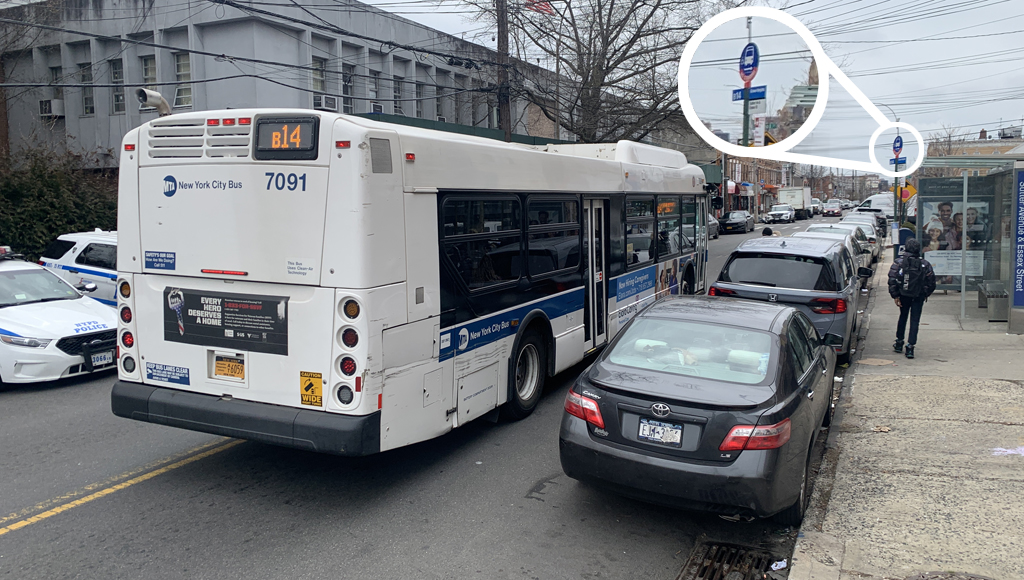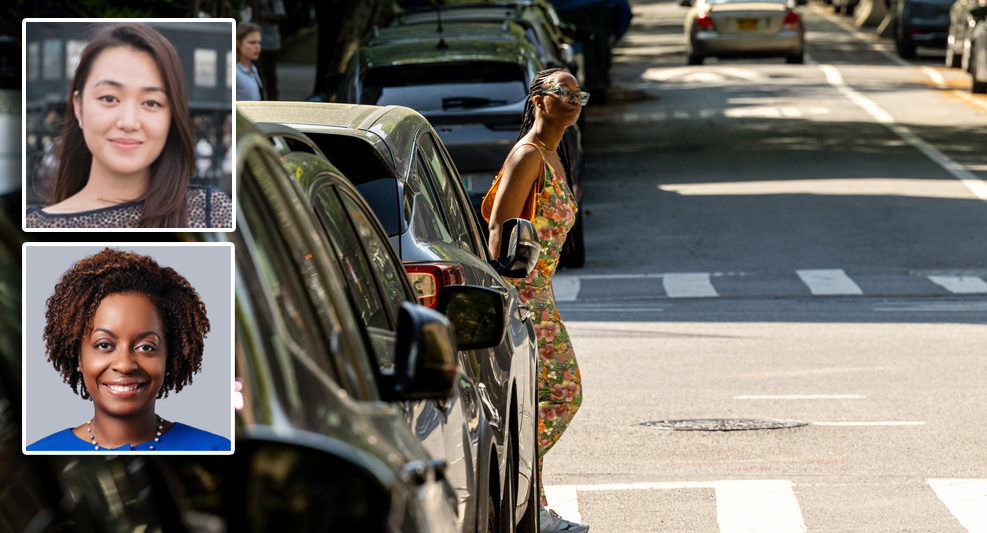The Manhattan grid is simple enough to navigate, but throughout the city, it's still easy for tourists and locals alike to get turned around. To help people find their way on foot, the the city is launching WalkNYC, its new pedestrian wayfinding initiative. This afternoon, Transportation Commissioner Janette Sadik-Khan kicked off the program at a newly-installed sign at the corner of Mulberry and Worth in Chinatown.
"The term wayfinding may sound a bit wonky, but the concept behind WalkNYC is very simple," she said. "We have a great system of signage for cars, but we don't have a great system of signage for people on foot."
Council Member Jimmy Van Bramer of Queens, joining Sadik-Khan, emphasized the economic value of walking, noting that encouraging people to walk short distances makes them more likely to spend money in the shops and restaurants along the way.
According to DOT, 22 percent of car trips in NYC are less than a mile, an ideal distance for walking, and 30 percent of all trips in the city are already made on foot. Meanwhile, a DOT survey of pedestrians revealed that one in ten New Yorkers said they had gotten lost in the past week, and one in three didn't know which way was north.
Traditionally, the top of a map is north, but WalkNYC uses what's known as "heads-up" mapping, where the top of the map is the same direction the map is facing, helping people orient themselves more quickly. While each sign will be about 8.5 feet tall, they will vary between 18, 34, and 50 inches wide. Like bus shelters and bike-share stations, the WalkNYC wayfinding signs have been approved by the Public Design Commission and the Landmarks Preservation Commission for citywide implementation.
As of today, four signs have been installed in Chinatown -- the first was put in early last Friday morning -- and the city is set to have 100 signs this summer in Chinatown, the Garment District, Prospect Heights, Crown Heights, and Long Island City. In addition, DOT aims to cover Manhattan south of Houston Street this fall and expand the program to neighborhoods across the city next year.
The agency is positioning WalkNYC to become the citywide standard for pedestrian wayfinding. "Now we'll have one consistent map for everybody to look to when they're trying to get around," Sadik-Khan said, noting that the maps have already been installed on most bike-share stations. The MTA is also in on the project: The WalkNYC template will be the new standard for station-area maps near subway turnstiles as they are replaced over time, and DOT will be installing the signage along all Select Bus Service routes, starting with 34th Street and Nostrand Avenue. These signs could also include bus arrival information from Bus Time, the MTA's real-time vehicle tracking system.
The design relies heavily on the Helvetica typeface and black background that have become hallmarks of the subway system since their introduction in the 1960s. "Our designers were great, and they didn't need to reinvent the wheel," said DOT Assistant Commissioner for Urban Design and Art Wendy Feuer.
WalkNYC shares many similarities with Legible London, a wayfinding system launched by Transport for London in 2007, including the "heads-up" mapping technique. Sadik-Khan noted that some of the design team from London is also working on WalkNYC. The project team, selected after an RFP was issued in 2011, consists of wayfinding experts City ID, industrial designers Billings Jackson Design, graphic designers Pentagram, cartographers T-Kartor, and engineers and urban designers from the RBA Group.
The designers will complete a citywide WalkNYC map by early next year, allowing DOT to cut pieces from the larger map as necessary for individual installations. The agency will also be opening the underlying GIS data to developers, allowing for third-party mobile and web applications. DOT has issued a new contract for upkeep of the signs, and is also working with partners such as business improvement districts to maintain them. The program design and initial rollout costs $6 million, 80 percent of which is covered by federal transportation dollars, with the remaining 20 percent split by the city and its BID partners. Sadik-Khan said that the signs will not carry advertising or sponsorship to defray costs.






